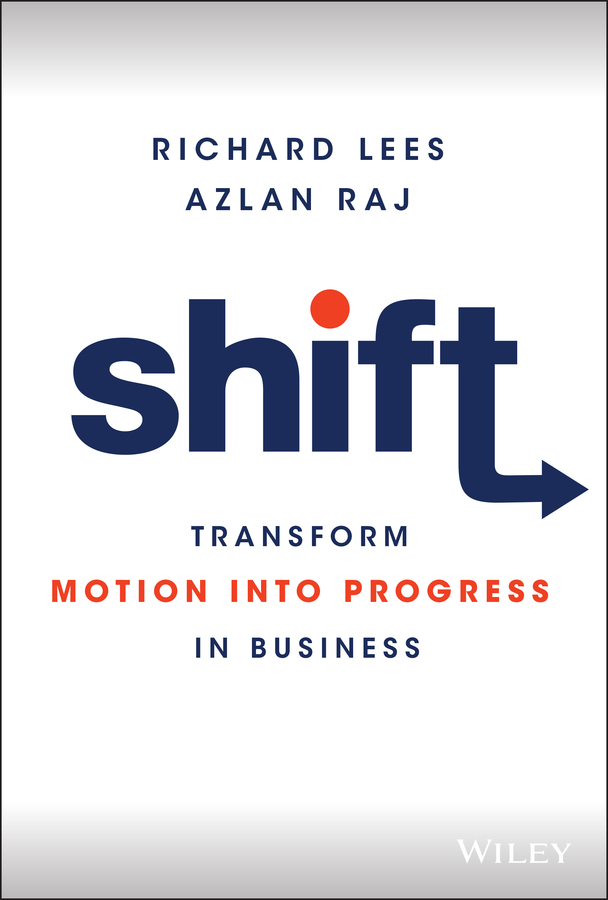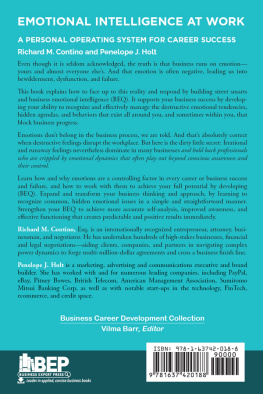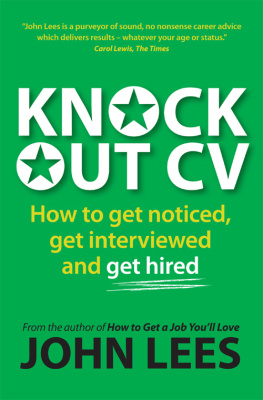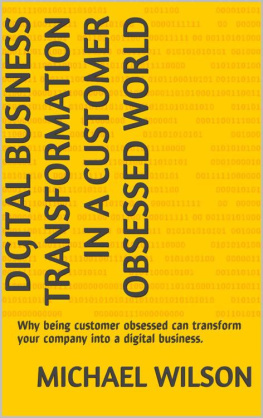Richard Lees - Shift: How to Transform Motion into Progress in Business
Here you can read online Richard Lees - Shift: How to Transform Motion into Progress in Business full text of the book (entire story) in english for free. Download pdf and epub, get meaning, cover and reviews about this ebook. year: 2021, publisher: Wiley, genre: Business. Description of the work, (preface) as well as reviews are available. Best literature library LitArk.com created for fans of good reading and offers a wide selection of genres:
Romance novel
Science fiction
Adventure
Detective
Science
History
Home and family
Prose
Art
Politics
Computer
Non-fiction
Religion
Business
Children
Humor
Choose a favorite category and find really read worthwhile books. Enjoy immersion in the world of imagination, feel the emotions of the characters or learn something new for yourself, make an fascinating discovery.

- Book:Shift: How to Transform Motion into Progress in Business
- Author:
- Publisher:Wiley
- Genre:
- Year:2021
- Rating:3 / 5
- Favourites:Add to favourites
- Your mark:
- 60
- 1
- 2
- 3
- 4
- 5
Shift: How to Transform Motion into Progress in Business: summary, description and annotation
We offer to read an annotation, description, summary or preface (depends on what the author of the book "Shift: How to Transform Motion into Progress in Business" wrote himself). If you haven't found the necessary information about the book — write in the comments, we will try to find it.
Richard Lees: author's other books
Who wrote Shift: How to Transform Motion into Progress in Business? Find out the surname, the name of the author of the book and a list of all author's works by series.
Shift: How to Transform Motion into Progress in Business — read online for free the complete book (whole text) full work
Below is the text of the book, divided by pages. System saving the place of the last page read, allows you to conveniently read the book "Shift: How to Transform Motion into Progress in Business" online for free, without having to search again every time where you left off. Put a bookmark, and you can go to the page where you finished reading at any time.
Font size:
Interval:
Bookmark:

- Introduction
- Chapter 2
- Chapter 3
- Chapter 4
- Chapter 5
- Chapter 6
- Chapter 7
- Chapter 8
Richard Lees
Azlan Raj

This edition first published 2022
2022 by Richard Lees and Azlan Raj

This work was produced in collaboration with Write Business Results Limited. For more information on Write Business Results' business book, blog, and podcast services, please visit our website: or call us on 020 3752 7057.
Registered office
John Wiley & Sons Ltd, The Atrium, Southern Gate, Chichester, West Sussex, PO19 8SQ, United Kingdom
For details of our global editorial offices, for customer services and for information about how to apply for permission to reuse the copyright material in this book please see our website at www.wiley.com.
All rights reserved. No part of this publication may be reproduced, stored in a retrieval system, or transmitted, in any form or by any means, electronic, mechanical, photocopying, recording or otherwise, except as permitted by the UK Copyright, Designs and Patents Act 1988, without the prior permission of the publisher.
Wiley publishes in a variety of print and electronic formats and by print-on-demand. Some material included with standard print versions of this book may not be included in e-books or in print-on-demand. If this book refers to media such as a CD or DVD that is not included in the version you purchased, you may download this material at http://booksupport.wiley.com. For more information about Wiley products, visit www.wiley.com.
Designations used by companies to distinguish their products are often claimed as trademarks. All brand names and product names used in this book are trade names, service marks, trademarks or registered trademarks of their respective owners. The publisher is not associated with any product or vendor mentioned in this book.
Limit of Liability/Disclaimer of Warranty: While the publisher and author have used their best efforts in preparing this book, they make no representations or warranties with respect to the accuracy or completeness of the contents of this book and specifically disclaim any implied warranties of merchantability or fitness for a particular purpose. It is sold on the understanding that the publisher is not engaged in rendering professional services and neither the publisher nor the author shall be liable for damages arising herefrom. If professional advice or other expert assistance is required, the services of a competent professional should be sought.
Library of Congress Cataloging-in-Publication Data
Names: Lees, Richard (Chief strategy officer), author. | Raj, Azlan (Chief marketing officer), author.
Title: Shift : Transform motion into progress in business / Richard Lees and Azlan Raj.
Description: West Sussex, United Kingdom : Wiley, 2022. | Includes index.
Identifiers: LCCN 2021042852 (print) | LCCN 2021042853 (ebook) | ISBN 9781119810148 (cloth) | ISBN 9781119810506 (adobe pdf) | ISBN 9781119810490 (epub)
Subjects: LCSH: Customer relations. | Consumer behavior. | Consumer satisfaction. | Success in business.
Classification: LCC HF5415.5 .L438 2022 (print) | LCC HF5415.5 (ebook) | DDC 658.8/12dc23
LC record available at https://lccn.loc.gov/2021042852
LC ebook record available at https://lccn.loc.gov/2021042853
Cover Design: Wiley
At dentsu, we are striving to be champions for meaningful progress. This is one of the core principles that underscores our vision, but what does it truly mean? For us, meaningful refers to activities that add value to people's lives, while progress is the positive manifestation of motion with the focus placed firmly on our desired outcomes.
Meaningful progress is a force for growth and good. It is a force that can unlock unique possibilities to drive sustainable value and lead to lasting change. It is the gateway to the future for brands in all industries.
I first met Rich and Az after joining dentsu in 2020, and when they shared the concept of this book, I could immediately see how our ambition of championing meaningful progress was woven throughout its chapters. More than this, it maps out the connections that businesses of all sizes must consider if they, too, are to achieve meaningful progress.
In the highly competitive and fast-changing world that we find ourselves in, keeping up is hard enough and staying ahead can be a constant challenge. The currency of business nowadays is speed. Doing something is simply not good enough. There are numerous fronts that must be navigated simultaneously, and prioritising the important over the nice-to-have can be hard to do.
This struggle is one that Rich and Az understand well. The ideas they share in this book are simple to draw out. They are easy to explain, and certainly important to connect. However, they are difficult to do, which is why so many businesses get stuck in a trap of constant motion, whereby a lot of tasks are done that keep everyone very busy and deplete budgets, but you lose sight of meaningful progress.
When this happens, it becomes increasingly difficult to translate this movement into clear and measurable business or customer value. This is when the focus often shifts to processes and projects, moving away from customer needs and the value that is derived from meeting them.
Az and Rich use a simple Formula 1 analogy to link the three core themes that a business must connect to create one seamless ecosystem for success. Drawing on their collective 50 years in the realm of customer experience, they use clear examples of the challenges that businesses face in order to highlight not only the importance of each core theme, but more importantly, the need to weave them across every element of the business landscape to deliver true value.
The first of these core themes is a clear vision that sets the direction and common purpose for your organisation, and the need for clear measures to ensure you remain on track. The second is the team and the need for alignment of purpose across an entire organisation. They also delve into radical collaboration, another of our passions at dentsu, as well as the need for autonomy. The final theme relates to reading the market and understanding the external factors that affect every business's ability to compete effectively.
The threads that connect these themes and their many integrated topics are the simple concepts of starting with the end in mind, recognising that motion does not necessarily equate to progress, and actively seeking out and measuring that progress.
If you can't turn motion into progress, what you are left with is a lot of very expensive movement. If you proxy motion for progress, as many businesses do, you will become stuck. As you read, you may realise that your business falls into this category. If that's the case, you'll find tools in these chapters to help you turn motion into meaningful progress. I urge you to use them.
Since starting my role with dentsu, I have spoken to hundreds of clients and all of them mention the same challenges; chief among them are transformation and finding a way to measure the efficiency of their activities. In my career I have been both client and agency side; I have worked with some of the world's biggest brands and I have witnessed how these challenges manifest themselves in different organisational environments. I also understand the crucial role that strong leadership plays in navigating these challenges.
Next pageFont size:
Interval:
Bookmark:
Similar books «Shift: How to Transform Motion into Progress in Business»
Look at similar books to Shift: How to Transform Motion into Progress in Business. We have selected literature similar in name and meaning in the hope of providing readers with more options to find new, interesting, not yet read works.
Discussion, reviews of the book Shift: How to Transform Motion into Progress in Business and just readers' own opinions. Leave your comments, write what you think about the work, its meaning or the main characters. Specify what exactly you liked and what you didn't like, and why you think so.








